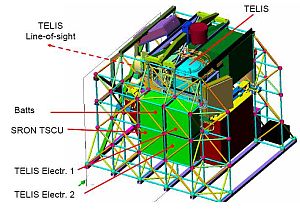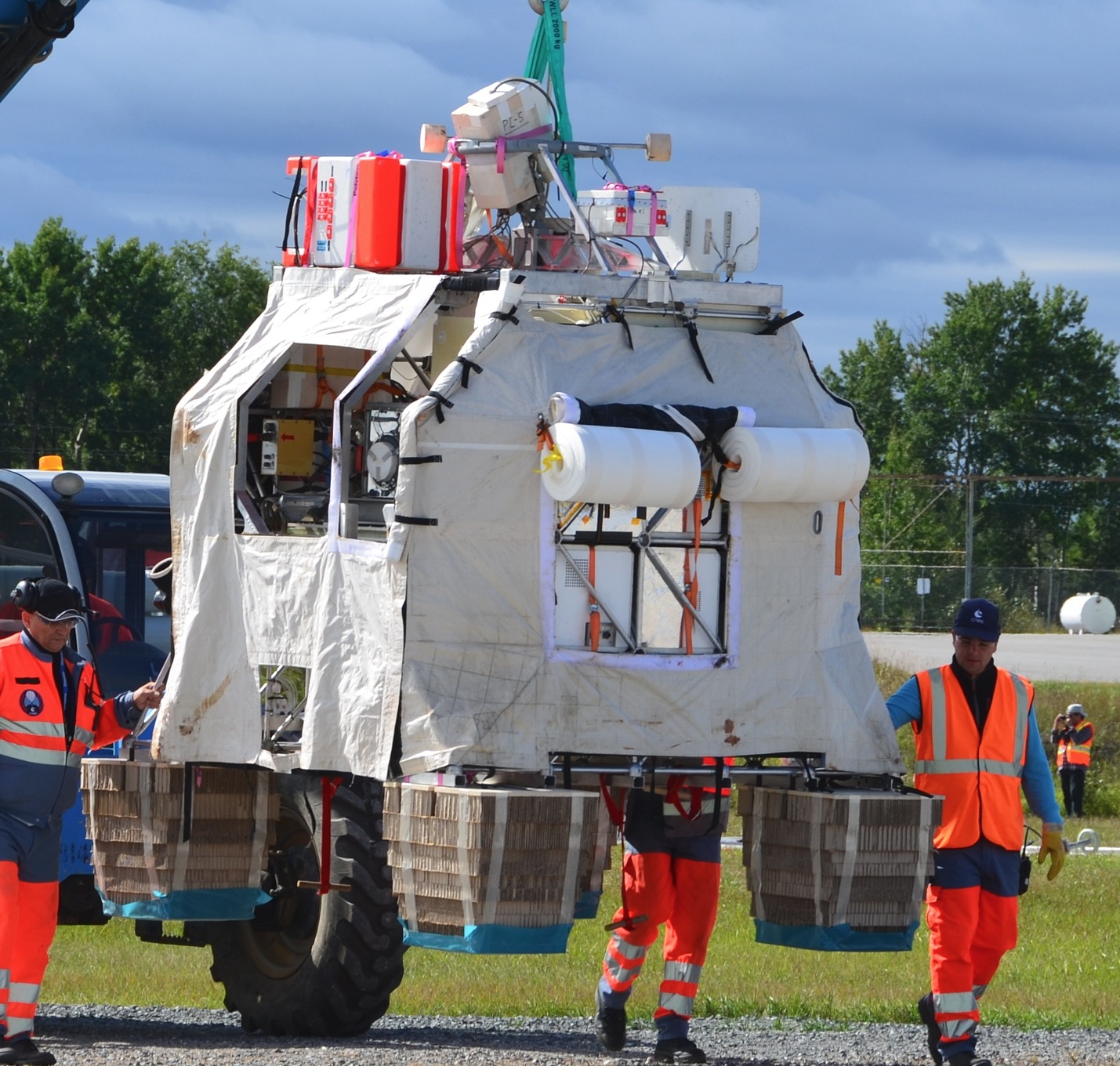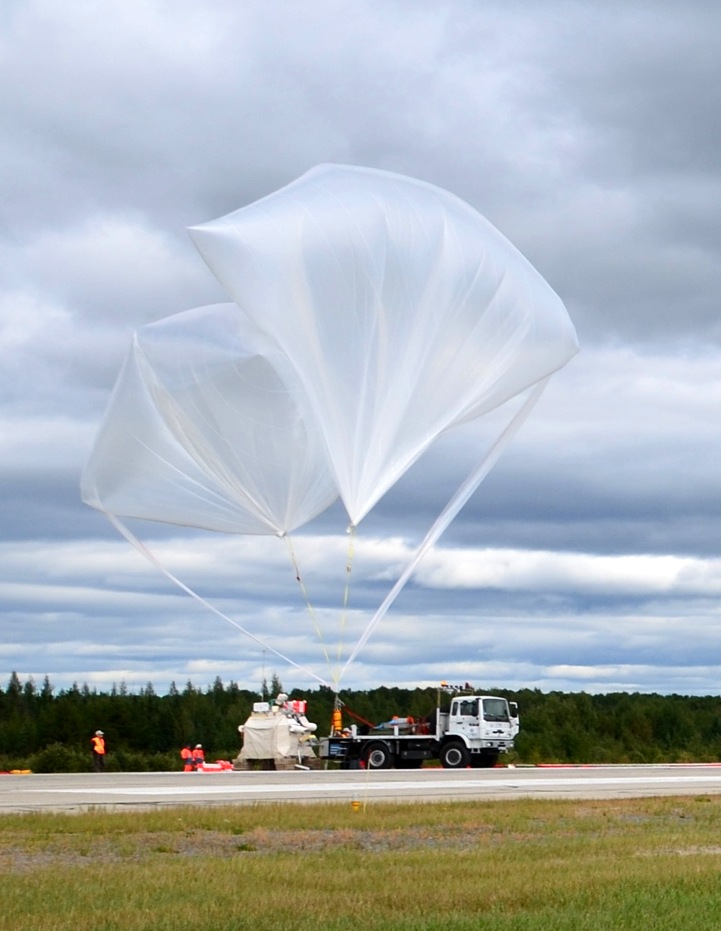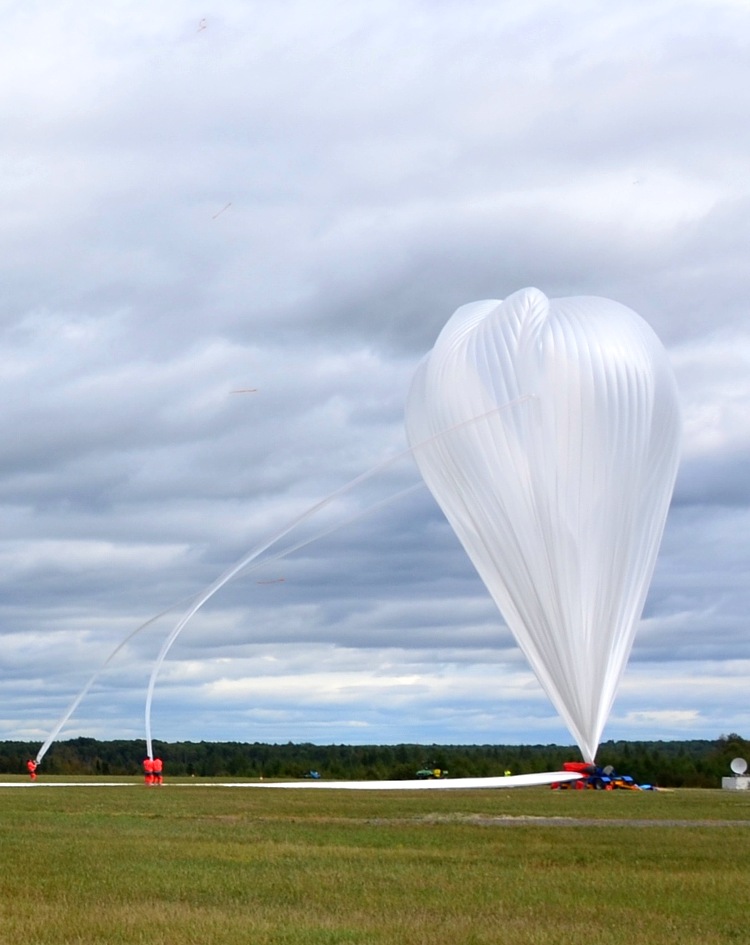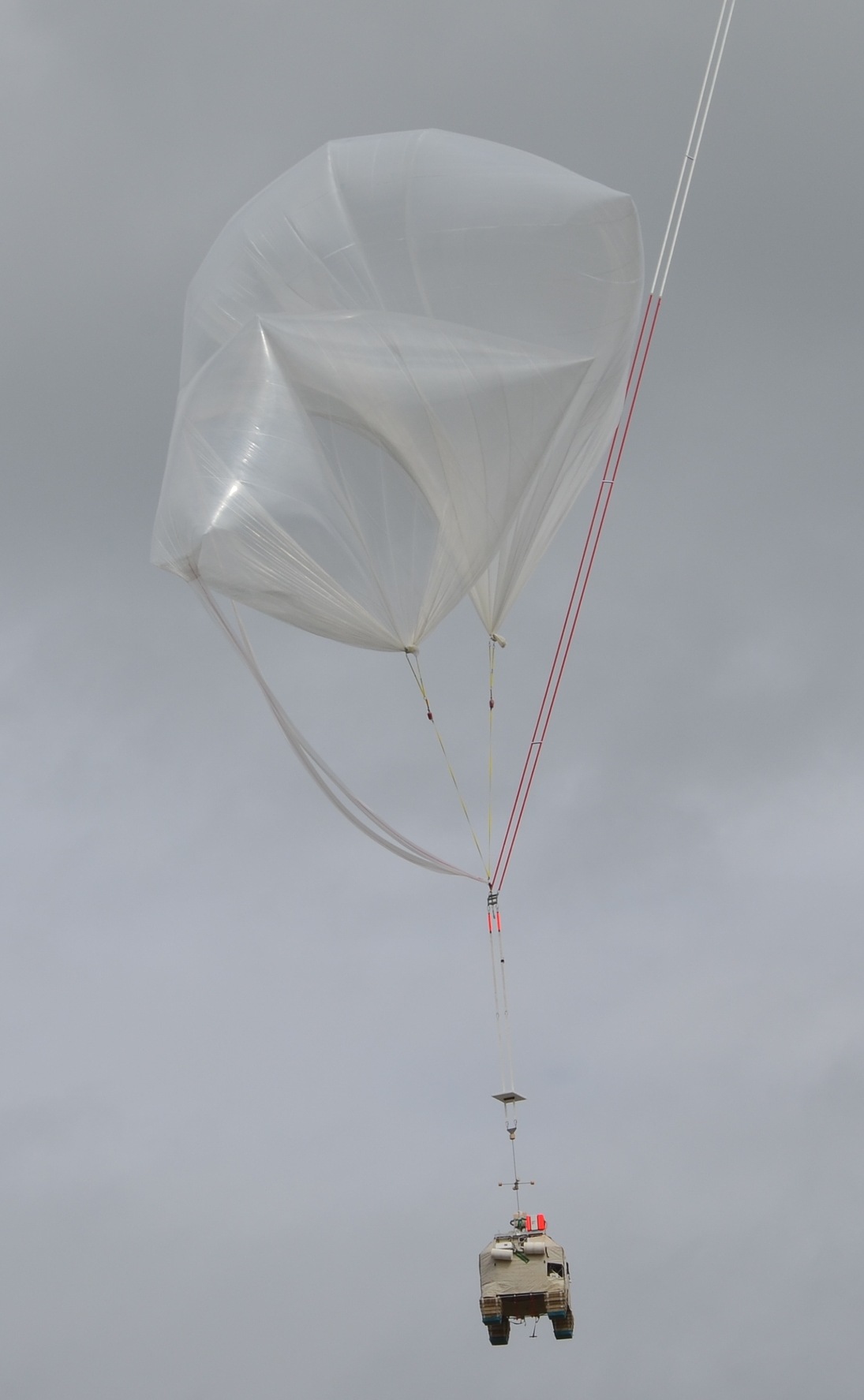Purpose of the flight and payload description
It is an advanced Fourier Transform Infra Red (FTIR) spectrometer specially tailored to the operation on a stratospheric balloon gondola. It allows precise limb emission sounding of chemical constituents related to the stratospheric ozone problem and the greenhouse effect. This method is appropriate to obtain vertical profiles of ozone and a considerable number of key radicals (NO, NO2), reservoir species (HNO3, N2O5, ClONO2, and HO2NO2) as well as source gases (CH4, N2O, H2O, CFC-11, CFC-12, CFC-22, CCl4, CF4, C2H6, and SF6) simultaneously, with an altitude resolution of 2 to 3 km.
The MIPAS-B experiment was also thought as precursor for a space version of MIPAS actually installed onboard ENVISAT.
The instrument is divided in five operational segments:
(1) the gondola,
(2) the line-of-sight (LOS) stabilization and reference system,
(3) the cryogenic spectrometer,
(4) the on-board electronics, and
(5) the ground control equipment
The gondola is a frame construction, developed by the Geneva Observatory, combining high stability and safety with relatively low weight and easy servicing.
The LOS system is based on a miniaturized inertial navigation system with embedded GPS (Global Positioning System) that provides the attitude and heading reference of the instrument frame needed for the control loop to maintain the LOS within 300 m at the tangent point. A CCD star camera takes images of stars in the direction of the LOS that are used as absolute reference.
The spectrometer consists of a three-mirror off-axis telescope, a double-pendulum interferometer, and a four channel liquid-He cooled infrared detector system. The heart of the instrument is the double pendulum interferometer, a modification of the classical Michelson set-up. The four-channel detector system allows the simultaneous coverage of the most important absorption bands of ozone-relevant molecules between 5.2 and 13.3 µm.
The analogue data is sampled on-board, mixed with the information of the other channels and the housekeeping data, and sent to ground via telemetry at a data rate of 250 kbit/s. An uplink connection of 1200 bit/s ensures full commandability of the instrument during flight.
On ground, the raw data is split up again and stored immediately in a data base. At the same time, housekeeping data and interferograms can be viewed and processed to allow on-line evaluation of measured data and of instrumental health.
Details of the balloon flight
Balloon launched on: 9/7/2014 at 15:19 local
Launch site: Timmins Stratospheric Balloon Base, Ontario, Canada
Balloon launched by: Centre National d'Etudes Spatiales (CNES)
Balloon manufacturer/size/composition: Zero Pressure Balloon model 402z Zodiac - 402.000 m3
Flight identification number: NIMBUS-4
End of flight (L for landing time, W for last contact, otherwise termination time): 9/8/2014 at 10:08 local
Balloon flight duration (F: time at float only, otherwise total flight time in d:days / h:hours or m:minutes - ): 18 h 49 m
Landing site: In Senneterre, Quebec, Canada
Campaign: STRATO SCIENCE 2014
Payload weight: 764 kg
Overall weight: 2139 kg
As piggy back payload was included TELIS (Terahertz and Submillimeter Limb Sounder) a 3 channel cryogenic heterodyne receiver developed by DLR with high sensitivity and stability, which like MIPAS is a limb sounder measuring reactive species, water isotopomers and some atmospheric tracers with a vertical resolution of about 2 km.
External references
- MIPAS website Institut für Meteorologie und Klimaforschung - Universität Karlsruhe
- Assessment of the Last Two STRATO SCIENCE Campaigns in Timmins, Canada SpaceOps 2016 Conference, SpaceOps Conferences, (AIAA 2016-2611)
- Remote Sensing of Stratospheric Trace Gases by TELIS ATMOS 2015, Proceedings of the Conference
12583If you consider this website interesting or useful, you can help me to keep it up and running with a small donation to cover the operational costs. Just the equivalent of the price of a cup of coffee helps a lot.

